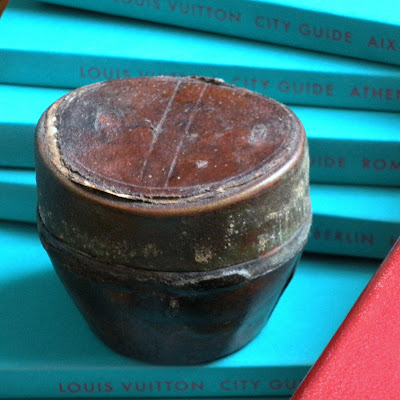
Happy New Year!
Today is the 1st, and my friend,
Alison, @ The Polohouse
is hosting a new monthly party.
Favorites On The First
Alison asked us all to share a collection this month.
Just one, Alison?
Difficult to single one out here.
I seem to gather collections of many things.
Anyone else out there
find this to be true in your home?
Please tell me I'm not alone!
For me, one of the sad realities
of the modern world of technology
is that the hand written word is becoming scarce.
In this day of cell phones, text messages, emails, and tweets,
many have abandoned the handwritten note or letter.
Students today often don't receive formal handwriting lessons
to learn the appropriate strokes of beautiful script.
I grew up in the era of fountain pens;
when one had to write out all assignments in long hand.
I loved the idea of putting ink on paper.
The fluid movement of the nib
moving across the paper was like magic to me.
The rhythm of that writing sang
as if it were a sweet melody.
My well used original
Parker pen still sits on my desk.
I suppose it's no surprise that this love
of writing with ink would naturally
lead to an interest in and affection for ink wells.
I'm a collector at heart and
shopping antique markets is a favorite pastime.
Though I didn't set out to specifically collect inkwells,
some of these little "wells" have followed me home.
This crystal inkwell with a plum top sits within
a pewter stand. It was made in France in recent years.
The larger of the three is this
heavy crystal block with sterling lid.
Though it is clearly marked,
I've not been able to date this piece.

The smallest of these is just an inch
square and a little over an inch and a half tall.
Both this one and the larger one
were found at local antique shows years ago.

This is a vintage traveling ink well that
was a purchase many years ago while
roaming a London antique market.

The leather case opens to reveal a
brass container in which to hold ink.
A group of Quimper ink wells gather
on another tray that moves about our home.
Each of these date to around 1920 - 1930.

The heart shaped one
is the first piece of vintage Quimper I acquired.
It was a birthday gift from a group
of friends given to me in the 1980s.
This little piece fueled my interest in
the antique and vintage pieces of French faience.

A souvenir from a California vacation one summer,
this little faience charmer is new production from the 1980s.
It is simply marked France Decor Main.
It opens to this sweet little flower
shaped stopper covering the well.

More faience ink wells can be found
among books in a guest bedroom.
These three were produced by Alcide Chaumeil
and are known simply as CA faience because of the mark.

I first saw this square example in the
collection of a fellow QCI member.
I was fortunate to find
this one for myself a year or so later.
this one for myself a year or so later.
It appealed to me because of the
mechanics of this box.
The ceramic lid pivots across to
reveal the well for the ink.
reveal the well for the ink.
I suspect this is a rare form.
Another rare form is this CA figural
of a Breton fisherman pulling in his catch.
The coiled rope is the lid to this
inkwell which I purchased in France.
A French market find, this rather
large piece is unfortunately missing its lid.
I found it laying in a box of
assorted things at a weekend brocante.
The price was too good to pass it by,
so it too resides among the others,
sans hat as Debbie @ Confessions of a Plate Addict says.
You can read about her French ink well find here.
A sweet pair of bunnies were an eBay score.
One holds the quills and the other the ink well.
They are Desvres production.
A limited edition piece, this handsome
ink stand was produced in 1990 by HB Henriot
to commemorate the tricentennial of the faience of Quimper.
The hand painted scene depicts the
city of Quimper and the Odet River.
The soft blue glaze and the fine detailed
painting make this a remarkable piece.
A documentation card provided with this piece
shows the other limited edition pieces
that were produced for this special occasion.

And lastly are these heavy ceramic Moroccan ink pots
that I purchased in the souks of Marrakech.
I found the rustic character with the vibrant
turquoise and amber details irresistible.
There you have it.
Just one of my assorted collections.
Just one of my assorted collections.
Grab a glass of bubbly on your way over to visit
more collections shared for Favorites on the First.
Happy New Year!
All the best for each of you in 2012.
Many thanks for your friendships,
your visits, and your thoughtful comments.
Linking to



































































.PNG)













.JPG)














.jpg)












































































.jpg)






